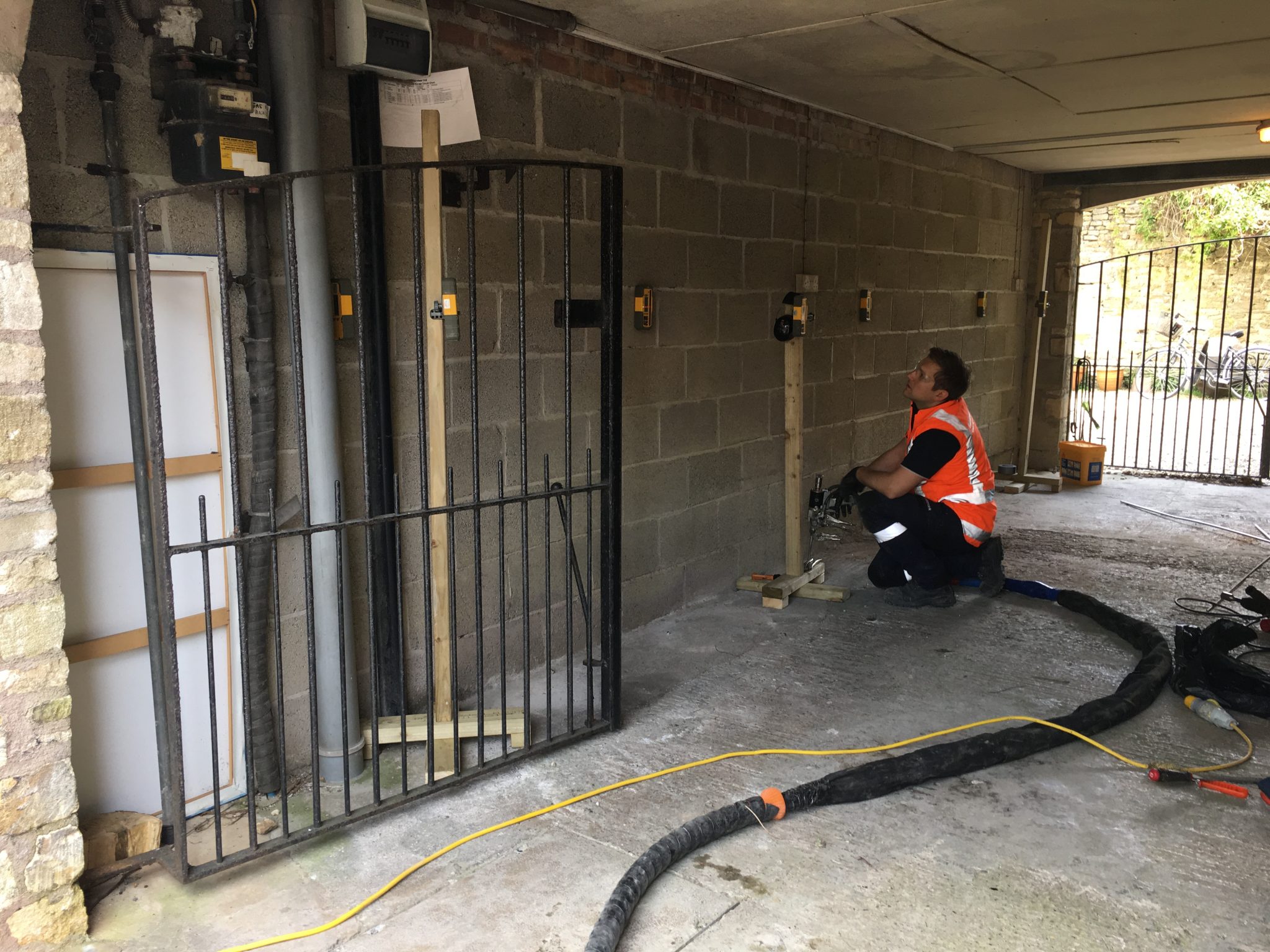
Cracks in walls, close to doorways and windows, and sloping or sinking floors are often early indicators that a building has foundation problems that could be the result of subsidence. This can happen for many reasons, including neighbouring construction affecting a building’s integrity or when soil becomes too wet or too dry, which will affect the foundation structure.
The process of underpinning is the most common method to fix subsidence as it strengthens a building’s foundations. The two most popular methods of resolving foundation issues are traditional concrete underpinning and modern resin injection. Both are proven methods, yet they involve very different procedures. Robbie Blanchfield from ground engineering expert, Mainmark, examines both solutions and explains the key differences.
Concrete underpinning.
This traditional method has been used for over 100 years and has been the go-to solution for strengthening foundations affected by soil subsidence. The basic premise of concrete underpinning is to increase the depth of the structure’s foundation to extend it to stronger soil. For this, large holes are dug beneath the structure and concrete is poured into the spaces in accordance with the project specific plan. This process essentially creates new foundations underneath the original, to further stabilise the structure. However, the tried and test methods is slow, labour intensive and thus very expensive. Access is required to the underside of the original foundation, making it an invasive solution that takes time and causes disruption for the building occupier as they are generally required to vacate their home while the work is being completed.
A further consideration required for concrete underpinning is the strength of the soil below. Deeper soil is not necessarily stronger, combined with this the area of the concrete underpins is often less than the area of the original strip-footing which might support a longer wall for example, this means the underpinning is likely not as strong as the original foundations. Furthermore, in certain clay soils the use of traditional underpins can cause differential movement between the underpinned sections of the structure and the original foundations of the structure.
Resin Injection
Although resin injection is a relatively modern method, it is still a proven one, having been used globally for over 20 years. This method of underpinning is highly regarded in countries where ground issues can happen on a large scale, including New Zealand and Australia. This process involves injecting resin into the existing foundations through small incisions made in the ground, typically only 16mm in diameter from outside a home. The resin then flows into the soil and expands. This compresses the surrounding soil whilst filling any voids and cracks.
The injection process is controlled by technicians who monitor the injection and movement using laser levelling instruments; the resin components can be tailored to suit unique soil conditions and the type of performance sought. By eradicating the need to excavate, this process is cleaner than concrete underpinning. As large excavations underneath the original foundation are not required, the project is usually completed within a day or two and occupants can often stay in the building.
Modern resin injection solutions can be used to successfully remediate homes affected by subsidence in significantly less time than it takes for traditional concrete underpinning.
Mainmark’s proprietary Teretek® engineered resin injection solution is a proven, cost-effective and quick alternative to the more invasive traditional methods. Using a process likened to keyhole surgery, the work can often be completed in one day. It is widely used to strengthen foundations, re-level buildings and remediate issues for residential, commercial, industrial, mining and infrastructure projects.
For more information regarding injection resin, please visit mainmark.com/uk/technology/teretek/
